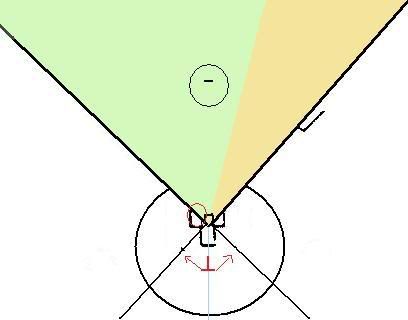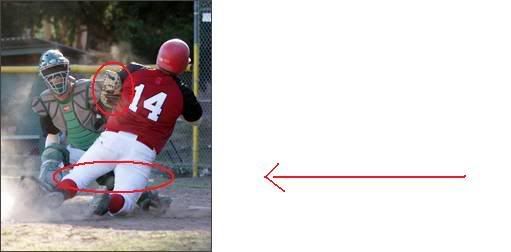the following was in response to somebody that asked for more information about being on the 1bL extended from my eval.
i gather from your post that you are a scholar of the "put the bag between you and the ball" theory, correct? i, too, am in that school, but it isn't often feasible to practice this when using the 2 man system. the only reasonable times this theory can be practiced is the PU covering 3B, the BU calling a play on his only runner at 2B with the ball coming from the vicinity of CF, and, sometimes, the PU taking plays at the plate. in just about all other scenarios, positioning yourself using this theory would likely leave a significant portion of the field uncovered.
that being said, let's move on to your inquiry. you asked me to elaborate on the 1B line extended from my OP in regard to plays at the plate. notice i said "sometimes" about plays at the plate. sometimes that is going to be the best place to be, but other times it will not. as this post progresses you will (hopefully) see the point i'm trying to get across is the absolute need to read and react in order to get in the best possible position to see the pay. i'm going to throw a couple of pictures and a drawing in to try and use as tools for explaining. i hope they are helpful.
my suggestion after the eval, and to all those that i train or that ask for help, is to start at the point of the plate and adjust as the play dictates. as a general rule, on throws originating from RCF to the RF line (area shown in orange in the diagram), the resulting play at the plate (if it is close) is probably going to be a swipe tag type of play. on throws originating from the other 2/3 of the outfield (shown in green in the diagram, the resulting play at the plate will probably be a plate blocking or collision type of play. if you notice my wording both in this post and in the eval, i said "likely" and "probably" when saying what type of play will develop. nothing is ever certain, and you HAVE to read the play and make adjustments for what type of play will develop.

now, on to the positioning...for the most part, the best angle to see a swipe tag type of play is to be looking up somewhere in the vicinity of the 3rd base line extended toward the plate as the catcher will be lunging with the glove extended and the runner will be sliding to the outside with his hand extended back toward the plate. in that case, i want to be looking up the line at the gap created between the two players, which should have the plate centered right in the middle.
on the flip side of that are plays where the catcher will have the plate blocked and will be waiting for the runner, or the ball and runner will arrive at approximately the same time and the throw is on line and the catcher is set up in a position to block the plate once he has the ball. in these types of plays the probable best position is going to be close to the first base line extended because that will afford me a view of the tag, and a view of the plate to see if the runner happens to sneak a foot through. if you are on the third base line extended for this type of play you can probably see the plate between the catcher's legs if he is blocking it, but you will not be able to see the tag because the catcher's body will be screening you out.
see the following pictures for examples of where the first base line extended (or close to it) would be the ideal position. i have added a little color into the pictures to highlight the important areas that we must see as umpires. the arrows depict the view i'd like to have, and the circles indicate the action i need to see. again, i'm not saying by any stretch, "on some plays you have to be here and others you have to be there." these types of plays require a little bit of umpiring. simply stated, you MUST be able to read what is developing and react to it to try and put yourself in the best possible position to see the play.



we all know about this play. as it turned out, 3BL extended was probably the best place to be for this play. the picture, however, is a good photo of what i am looking for as far as action on a play. a good example of the absolute necessity of being able to read and react to the play.
